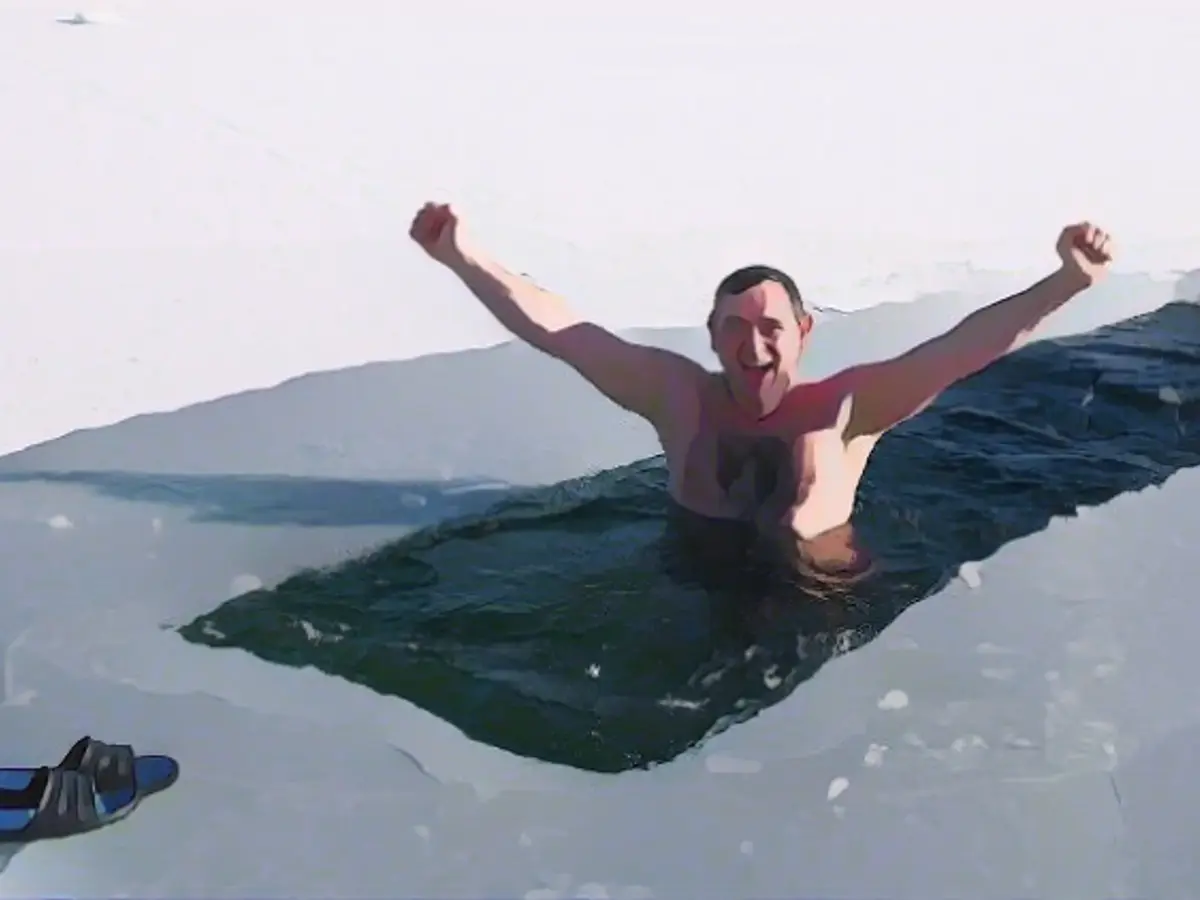How do you go ice bathing safely - and who better not?
Some people shudder at the thought, but others swear by the positive effects of ice bathing - it is said to be healthy and toughen you up. But is it really for everyone? And if you dare to take a dip in ice-cold water, what do you need to bear in mind?
After an ice-cold shower, you sometimes feel like you've been reborn. Happiness hormones are released, we are completely in the moment. Ice bathing is also said to have this effect - even stronger. What should you look out for if you want to try it out this winter?
First things first: "Ice bathing is generally not suitable for people with cardiovascular diseases or other organ diseases," says Martin Busse, Medical Director of the University Outpatient Sports Medicine Clinic in Leipzig. Untrained people are also at risk of cardiac arrhythmia. "In general, the whole thing should be systematically prepared with a sports medical examination," advises the sports physician.
How do you get fit for ice bathing?
The first step towards an ice bath is best taken in the bathroom at home - by taking a cold shower. Constantin Falcoianu, who has been ice bathing regularly for more than ten years, advises this. "In the first week, it can only be short intervals, which you then gradually increase," says Falcoianu, who co-founded the eisbaden.de portal. Thanks to the cold showers, the body can gradually get used to the cold.
This can mean: one week you take a cold shower for 15 seconds at a time, the following week you double this to 30 seconds. Then increase to 45 and finally to 60 seconds. If you follow this pattern, you should be ready for your first ice bath after around a month.
What are the most important rules for ice bathing?
Falcoianu advises shallow water. "This makes it easy to get in and, in an emergency situation, you can react quickly and get out of the water." Steeply sloping banks, on the other hand, are dangerous. "The basic rule is: never swim alone, never swim without possible ground contact, only swim directly on the shoreline and always be within reach of helpers," summarizes Martin Busse.
Incidentally, the rain barrel or hot tub in the garden are also an option. It is often easier to start ice swimming there because you don't have to leave your familiar surroundings.
As with traditional swimming in summer, the same applies to ice bathing: don't go into the water on a full stomach. "Digestion is interrupted during ice bathing and the food in your stomach is not digested for longer," says Constantin Falcoianu.
How can I overcome myself?

Your own head is usually the biggest obstacle. "It always hurts and is unpleasant to get into the ice-cold water. Even experienced ice bathers are no exception," says Falcoianu. To overcome this, the ice swimmer has a tip: go ice swimming in a group or with a partner. This creates a dynamic that provides additional motivation.
How long do I stay in the water?
The length of the first bathing session is individual and depends on various factors. After all, you can last longer in water with a temperature of 12 degrees than in water with a temperature of 5 degrees. It is essential to avoid hypothermia, says Martin Busse. "You can recognize it by the onset of cold shivering, which always indicates a drop in core body temperature." If this occurs, you should definitely get out of the water. "If in doubt, 30 seconds can be a lot."
Falcoianu also advises you to approach it slowly and not to overexert yourself. "In our ice bathing groups, we always say that you should primarily go by how your body feels. Of course it's freezing cold and your head immediately says: I can't do it." Nevertheless, he recommends staying in the ice water for about two minutes. "That's usually doable and brings the maximum benefit."
How do I warm up again afterwards?
When you leave the water, your bathrobe should ideally already be ready. It can also help to start moving immediately after getting dressed. "If you've been moving for a reasonable amount of time, your core temperature hasn't dropped and you can get a lasting feeling of warmth," says Martin Busse.
Falcoianu considers warming up to be one of the most important moments when ice bathing. "After the ice bath, the so-called 'after drop' sets in," he explains. "The blood vessels open up again and the cold blood from the periphery mixes with the warm blood from inside the body." This initially leads to a distinct feeling of cold.
You should give your body enough time to warm up. "If you warm up too quickly, the constriction of the blood vessels loosens abruptly and the cold blood from the body's shell flows back into the core of the body too quickly. This can trigger life-threatening cardiac arrhythmia," warns Falcoianu.
The right way is to go into a room at a pleasant temperature and shiver to keep warm. "You can wrap yourself up in a thick blanket and possibly also use a heating pad or hot water bottle." And then just enjoy it - and be proud that you overcame it.
Read also:
- This will change in December
- German activists speak out in Dubai on suffering in Israel and the Gaza Strip
- Nuclear fusion - hype or solution to energy problems?
- Budget crisis fuels debate on citizen's income - Bas warns against populism
Following the text, here are two sentences that contain the words 'Health', 'Immune system', 'Heart attack':
After an ice-cold shower or bath, your immune system might get a boost, improving your overall health. However, people with cardiovascular diseases or heart conditions should be particularly cautious with extreme cold therapy, as it could potentially trigger a heart attack.
Source: www.ntv.de







